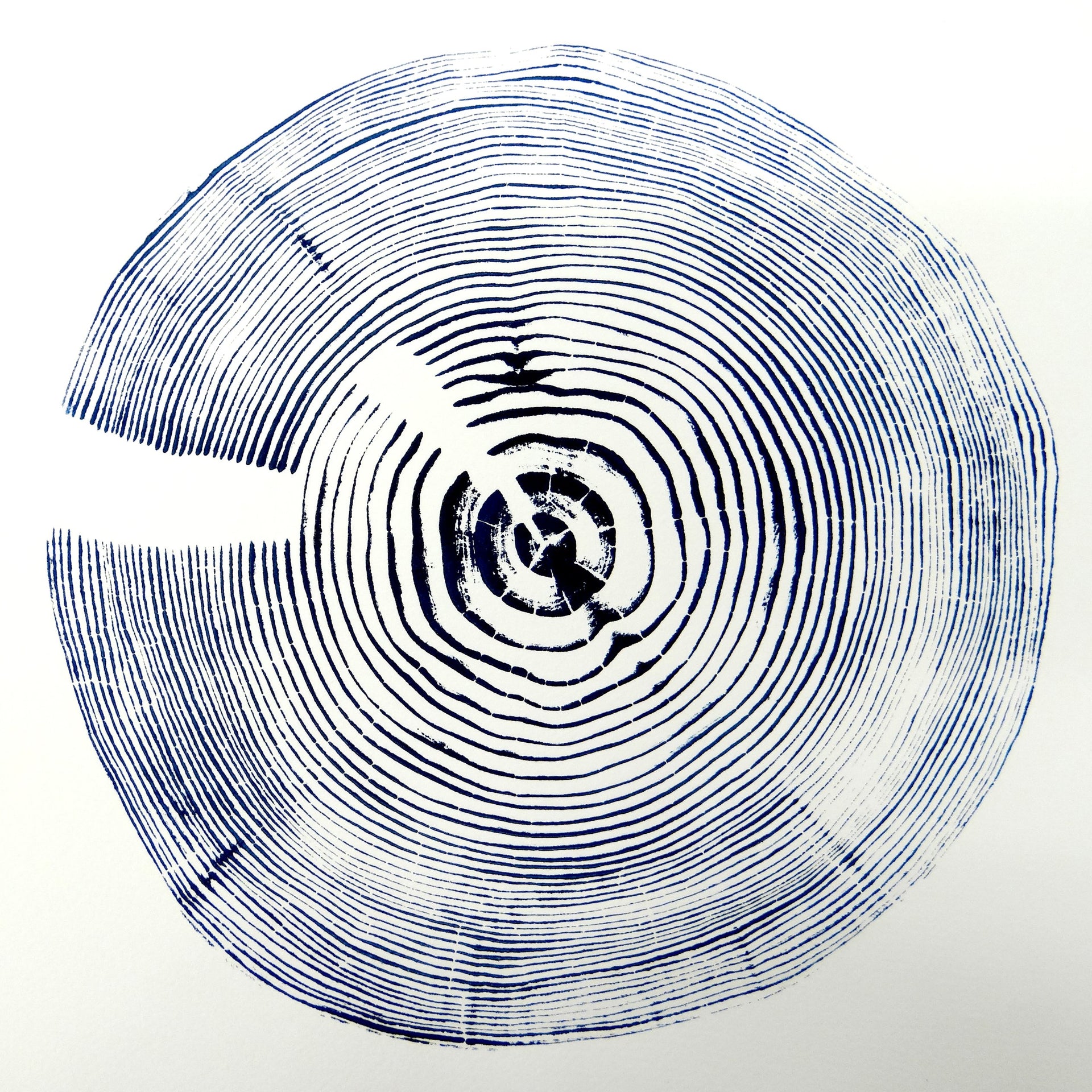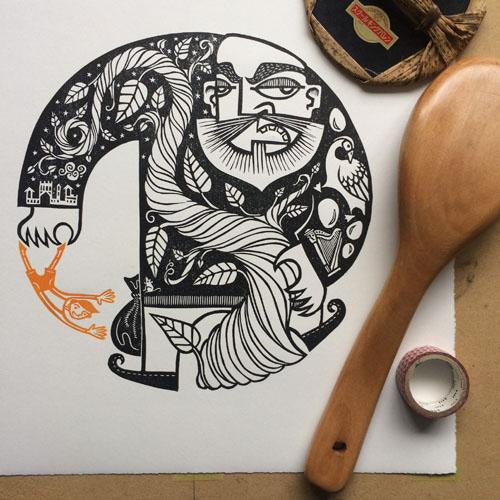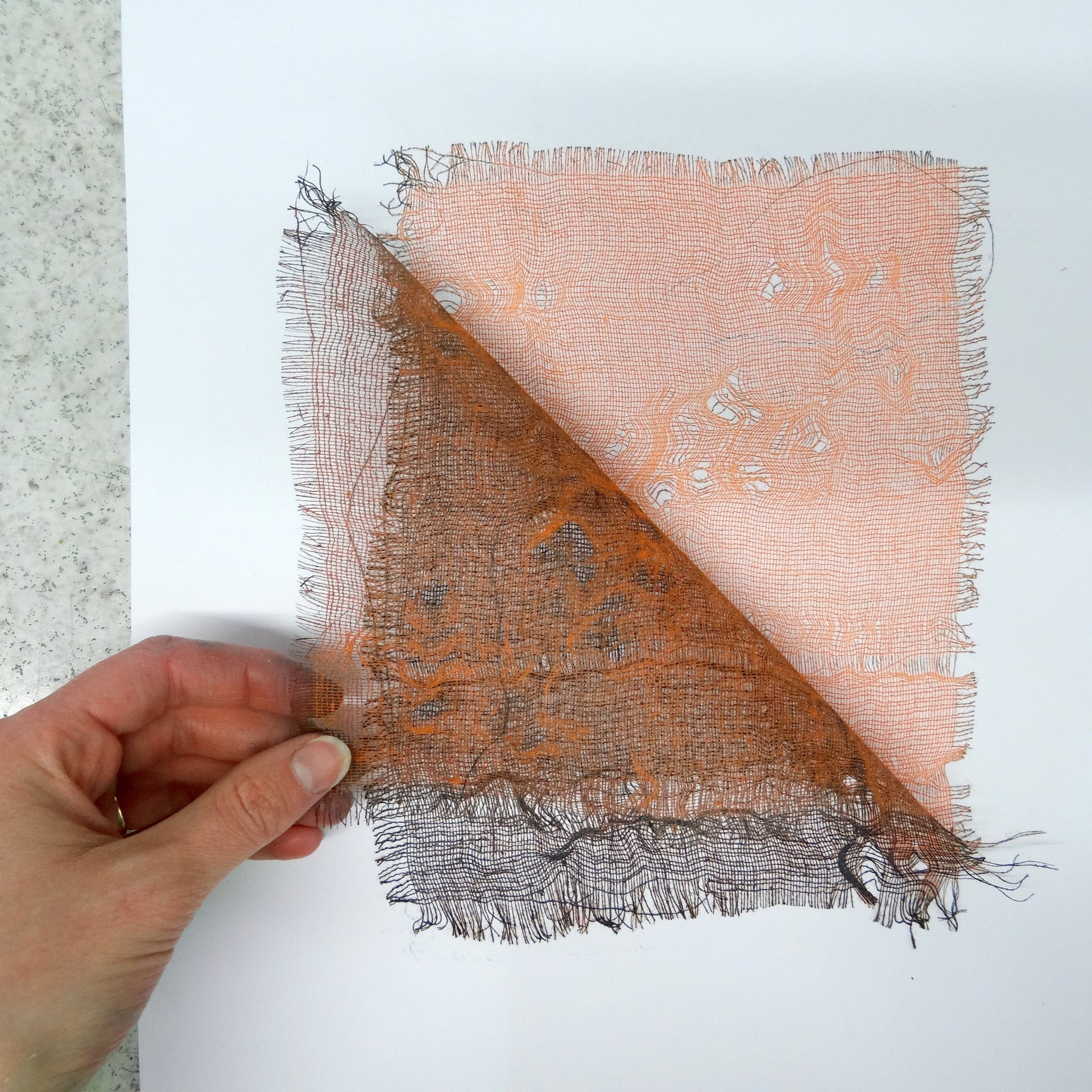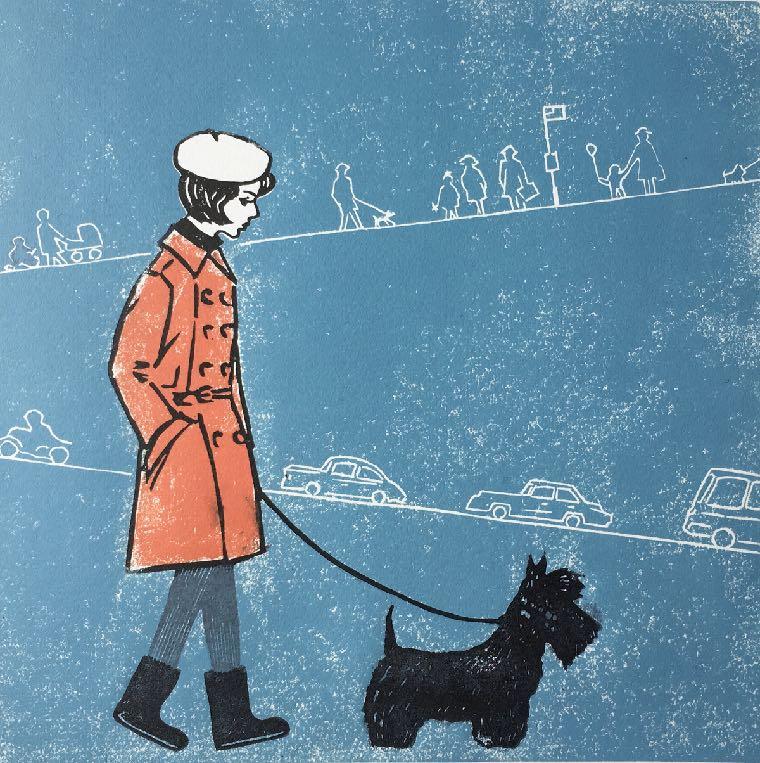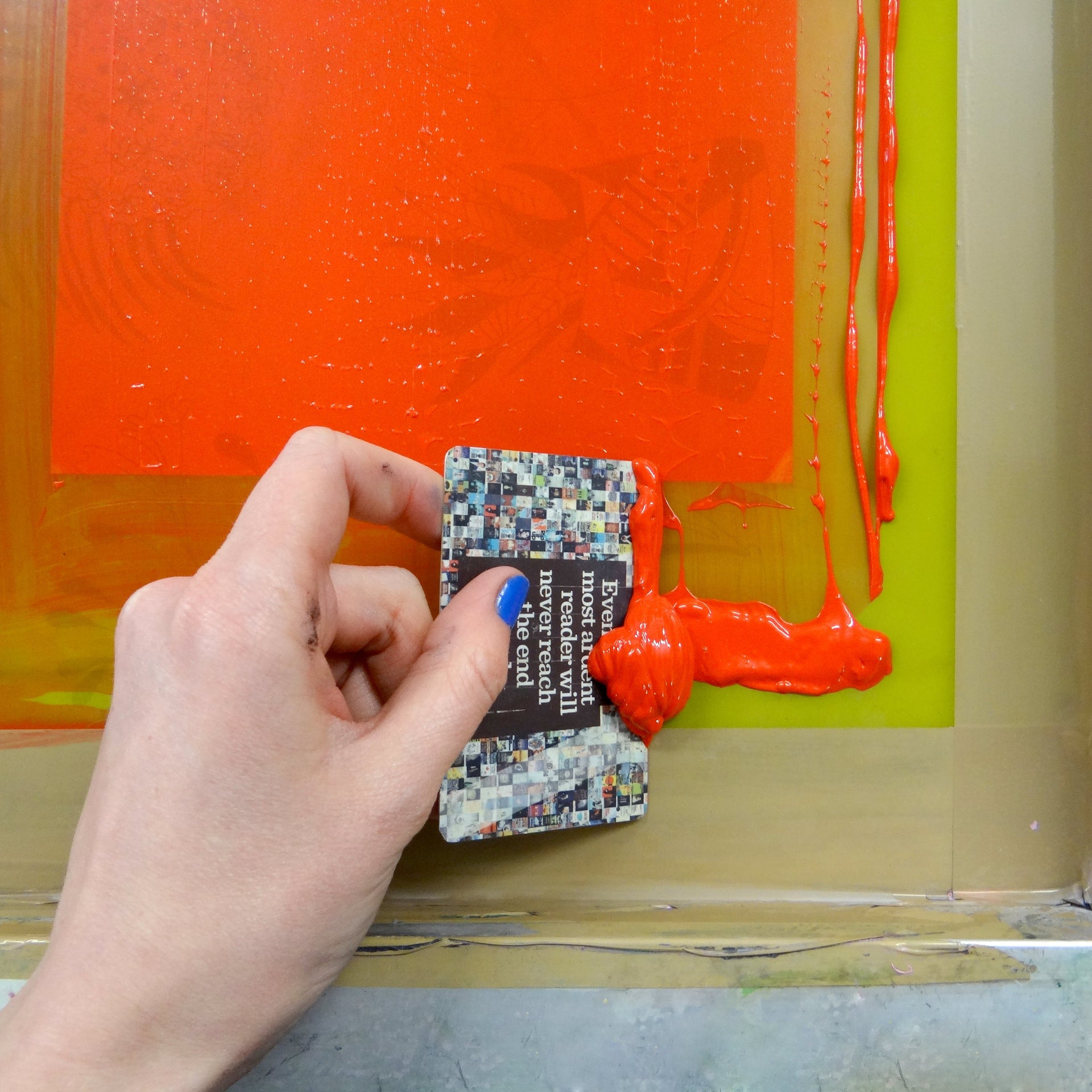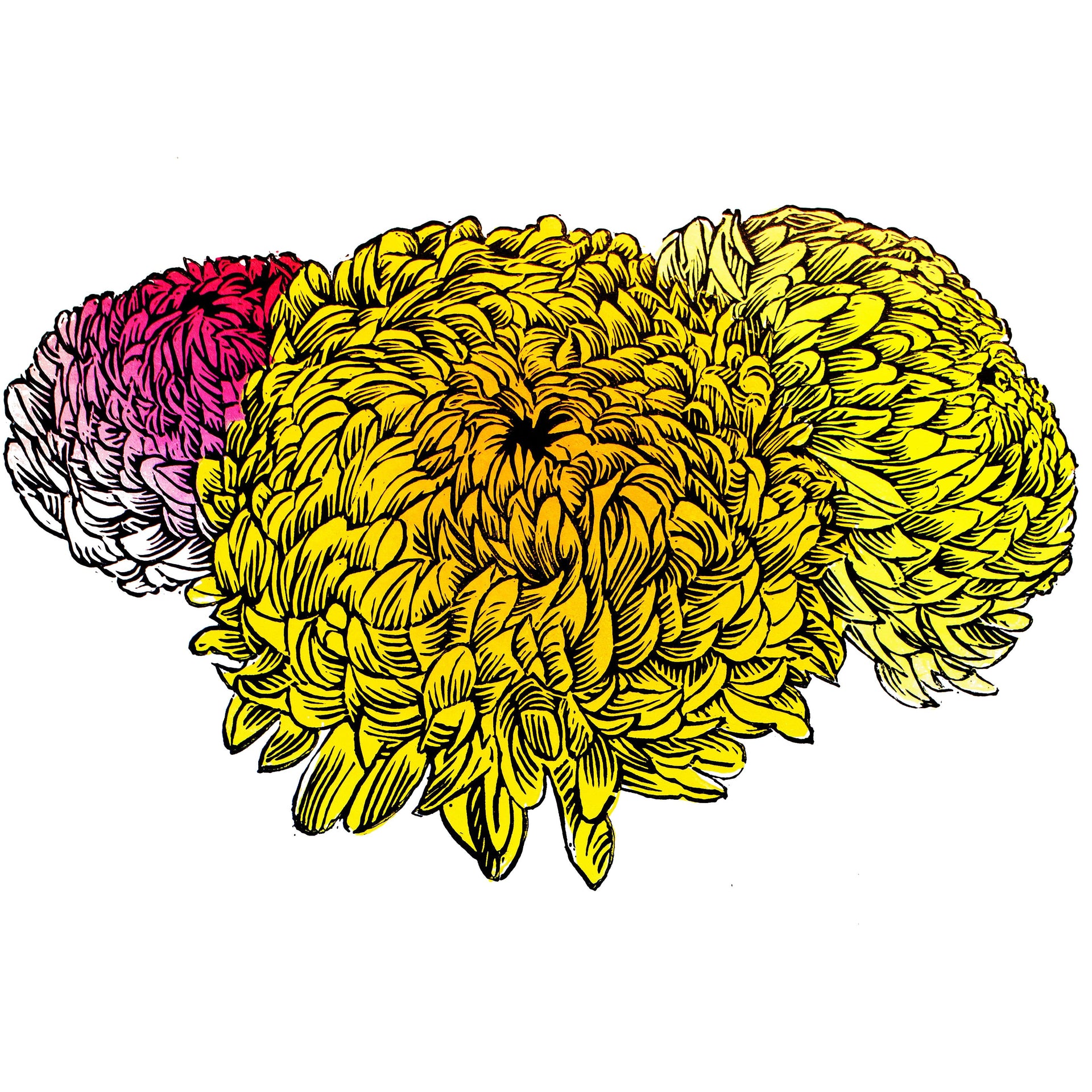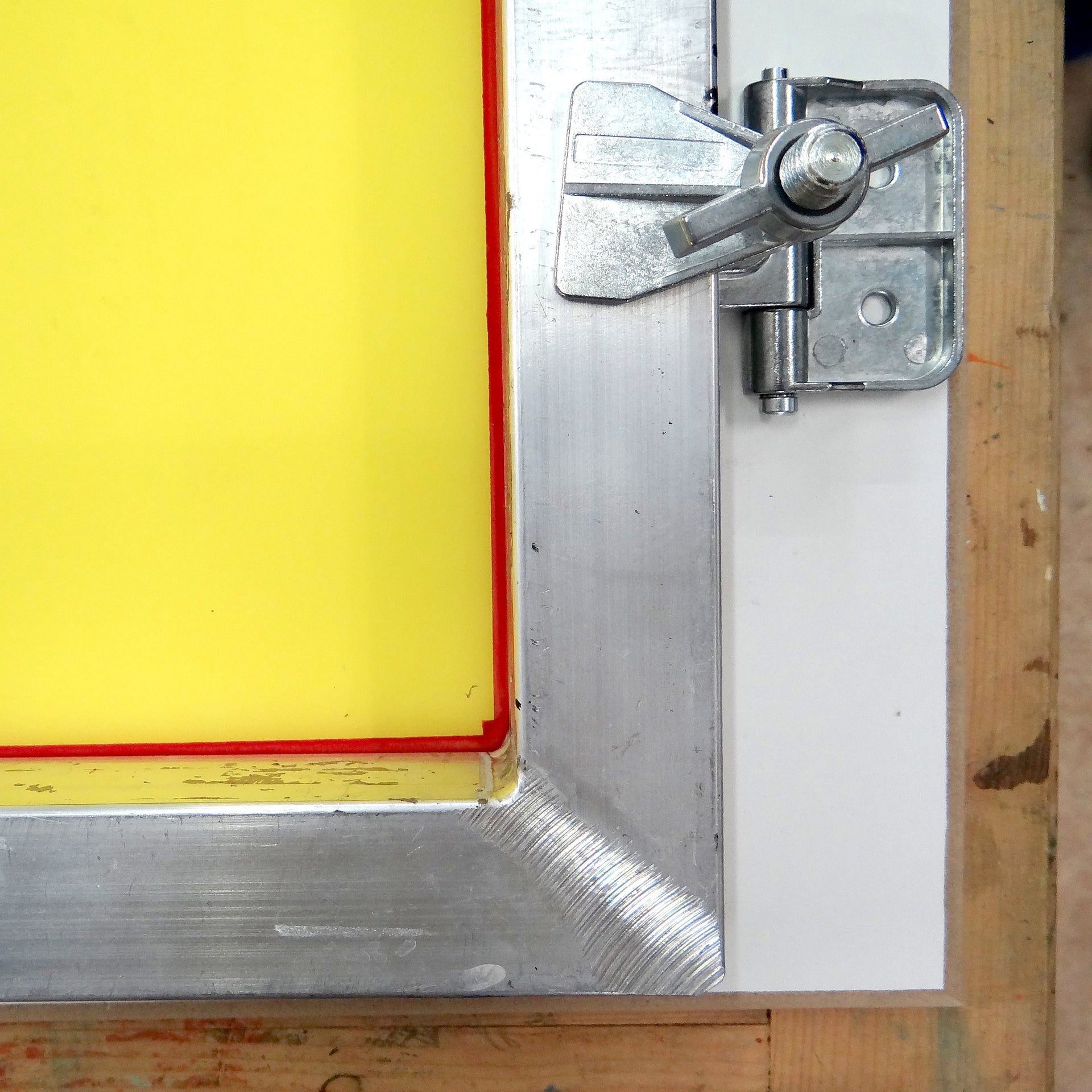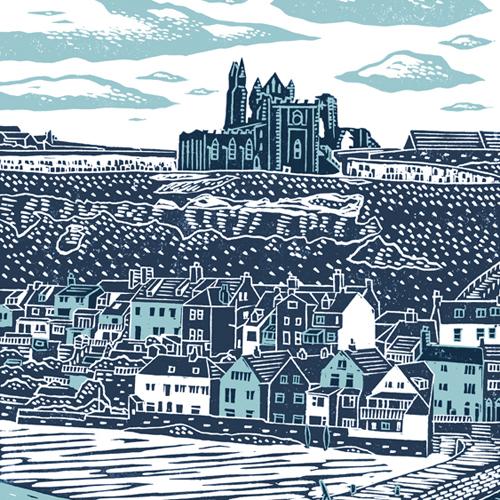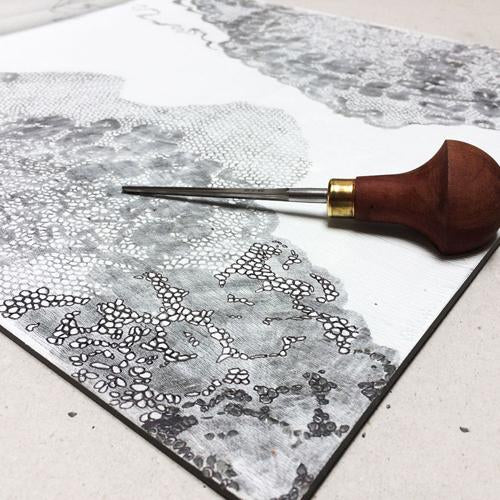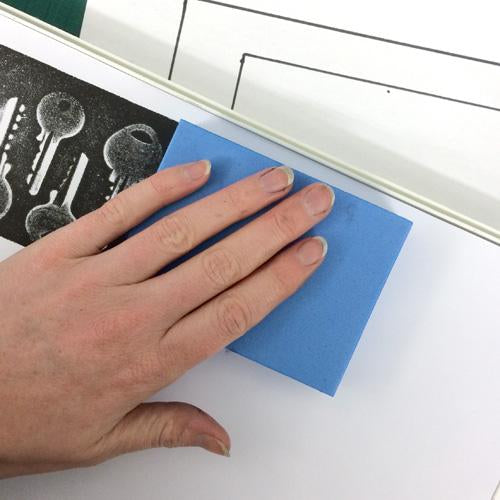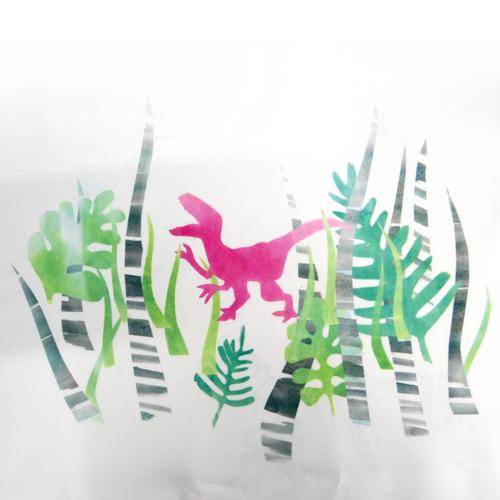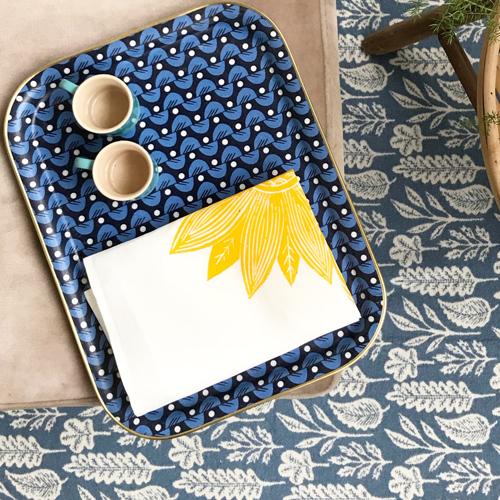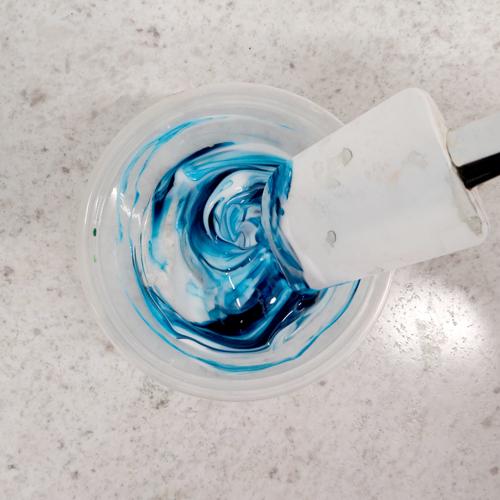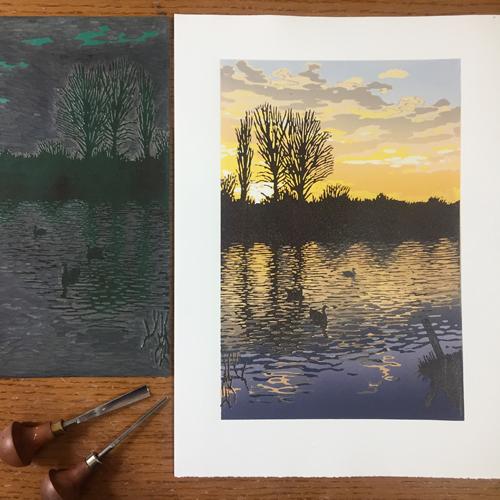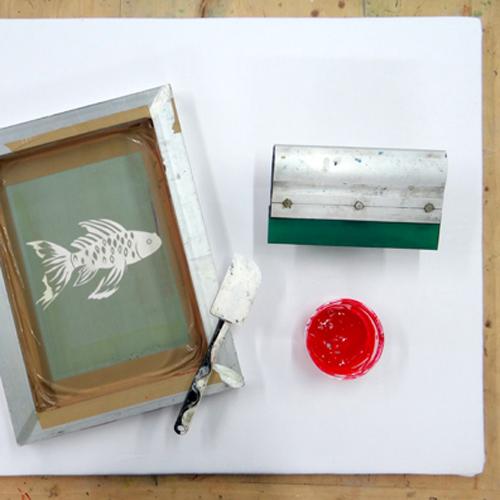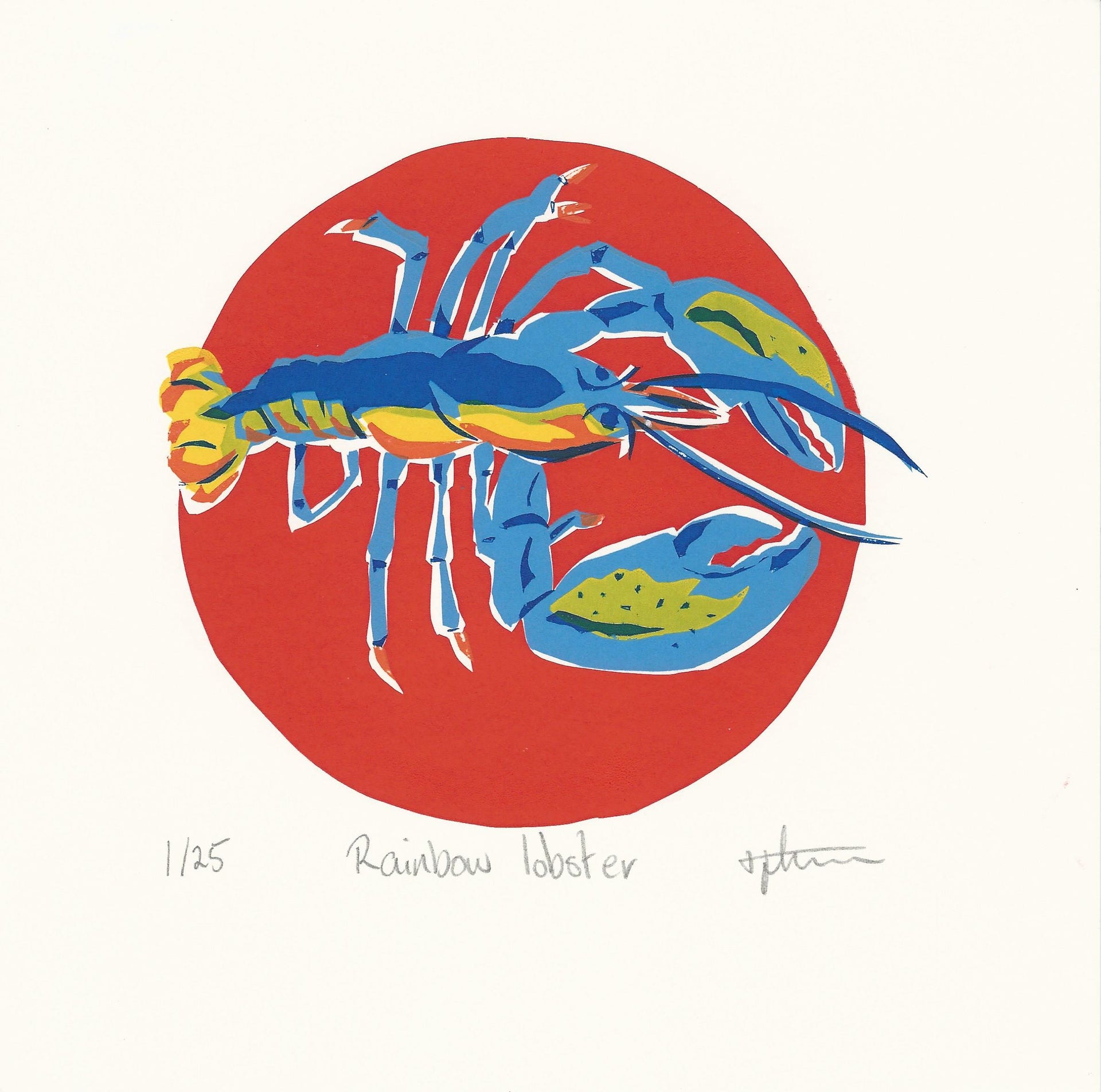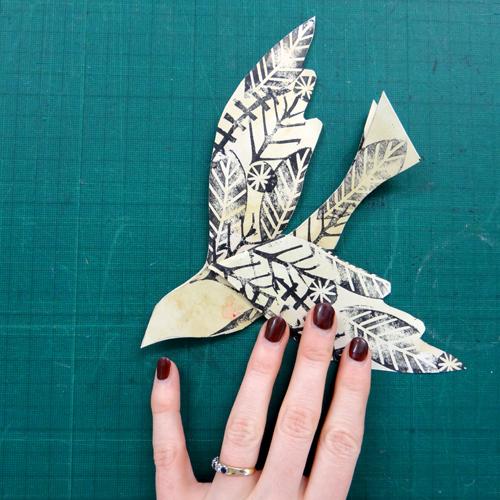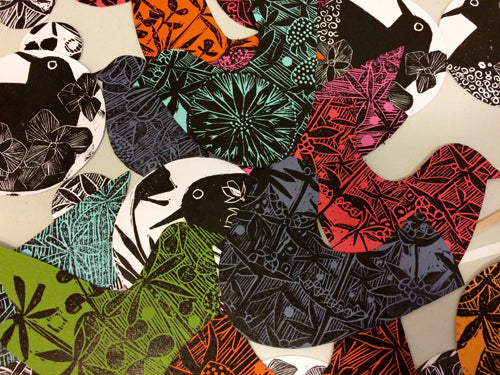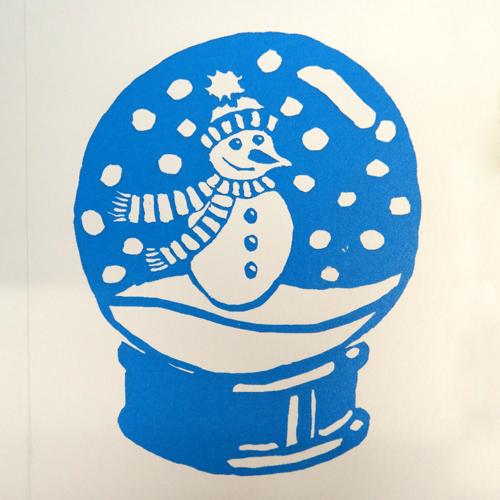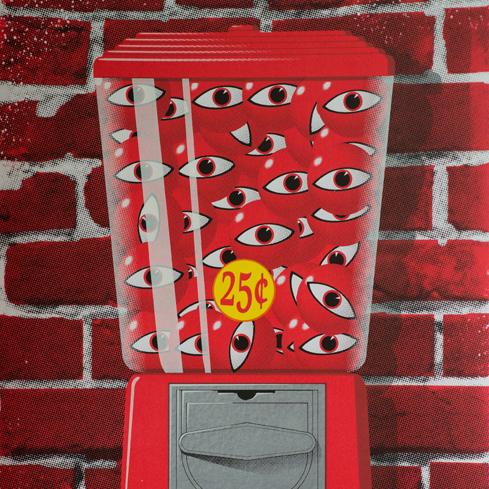Blog
-
It can be interesting to include natural textures in our relief prints. Wood grain is a beautiful organic pattern and can be printed especially well if we emphasise the natural grain in the wood. We can do this with a blow torch. Scorch the surface of the wood to bring out the wood grain. (Please be careful … Continue reading "Relief Printing from Wood Grain"
-
I’m Kat, and I’m a designer/printmaker from Aberdeen, now living and working in South East London. I make quirky, story-filled linocut prints… I came to printmaking late, and almost by accident, following the birth of my daughter in 2015. I was keen to make my living as a creative working on my own terms in … Continue reading "Meet the Maker: Kat Flint"
-
Monoprinting is a lovely technique that allows printmakers to be spontaneous, painterly and experimental. This simple monoprint project produces beautiful delicate prints using a piece of scrim and an etching press. Begin with a piece of perpex, a plastic inking plate or a sheet of drypoint plastic. use masking tape to tape off a rectangle on your perspex. … Continue reading "Monoprinting with Scrim"
-
Hallo, I’m Masha Tiplady, Edinburgh-based printmaker, working primarily in linocut. I grew up in Moscow and moved to Scotland nearly 20 years ago to complete my Master’s degree and now call it home. I like creating colourful linocuts, using both reduction and multiple-plate techniques. I absolutely love carving, it’s such a meditative process and I … Continue reading "Meet the Maker: Masha Tiplady"
-
There are many objects that can be gathered from around the house to add to your printmaking kit! Here are some of our favourite alternative uses for easily found objects that we use in the studio every day! Use clips on your hinged screen for an easy squeegee rest: Securing two large clips to your …
-
I am a Worthing based linocut printmaker. Born in Brighton, moving to Worthing in 2012, I’ve always been surrounded by the Downs and the sea, for which I am very lucky, if a little complacent of at times! I love to get out and about to find inspiration for my prints, which lately has been … Continue reading "Meet the Maker: Wayne Longhurst"
-
Using a hinged board to screen print onto paper is a game changer. It allows you to register layered prints and print in identical editions. Here’s how we made our latest batch of A2 hinged boards in the studio: You will need a board at least the same width and slightly longer than your screen...
-
My name is James Green and I’m an artist and printmaker based in Sheffield, South Yorkshire. I specialise in linocut and screen-print and have been working in these mediums for around sixteen years. Nine years ago I decided to give up my ‘proper’ job to concentrate on doing this full-time. My subjects range from landscapes … Continue reading "Meet the Maker: James Green"
-
I am a painter and printmaker from Salisbury, Wiltshire. I have a background in product design but my love of materials and traditional craftsmanship led me to pursue a career in fine art. I am happiest outdoors and when I’m not occupied with my two young children I can usually be found working on something … Continue reading "Meet the Maker: Gemma Dunn"
-
If you haven’t tried printing with magic Heat Stamps yet, this is your new project. It’s really quick to create a unique block that can be reused again and again to create different textures and patterns. All you need is a heat gun and a variety of objects and surfaces to create your stamps. Arrange a …
-
Transfer printing is a quick and playful printmaking method. The dyes require no fixative – only heat! They can be mixed up and left in a covered pot to use another day – they should keep indefinitely. Pour 100ml of warm water into a pot. Sprinkle 1tsp transfer dye onto the water. Use colours straight …
-
Hello! My name is Kiran and I’m a pattern designer based in Leicester. Describe your printmaking process. My designs start off as lino prints. I carve each design on Japanese vinyl and print them on fabric. How and where did you learn to print? I was born and raised in Singapore where I did my … Continue reading "Meet the Maker: Kiran Ravilious"
-
Making your own inks for screen printing onto fabric is an economical way to get a wide range of colours exactly to your specifications. The mixed inks will leave the fabric soft and washable. Here’s how to mix them: Start with Fabric Screen Printing Binder. This is a colourless screen printing medium and will form the … Continue reading "How to Mix Pigment and Binder to Screen Print onto Fabric"
-
I’ve always been creative and I’ve dabbled in lots of techniques in the past. When I graduated from a Design: Crafts degree in 2004 I was making and selling silver jewellery and I also painted. I happened across the reduction lino technique in 2010 and I’ve not really looked back. I’ve been a full-time professional … Continue reading "Meet the Maker: Alexandra Buckle"
-
Having a fabric printing pad makes a huge difference when you’re printing at home or in the studio. When screen printing or block printing onto fabrics, it helps to have slight padding underneath your printing surface to ensure you get an even print. You can also pin out fabric to the pad. We use these …
-
We’ve had another brilliant year in the Handprinted Studio! We love seeing our customers get stuck into loads of different techniques both in our workshops and during our open access days. As well as Shirley and Holly teaching workshops every week we’ve been lucky enough to have guest tutors such as Ian Phillips, Sue Brown, … Continue reading "Handprinted Studio 2018"
-
Homemade decorations can be the best (and cheapest!) way to decorate for Christmas. These little birdies would make lovely presents too. Get the kids involved with this easy project. To make things even easier, we’ve made a printable template for you to use. Print out a batch of templates. Each A4 template can be used …
-
I work mainly in relief print, both Lino and woodcut, I actually use Marley vinyl floor tiles in place of Lino, I like the way it cuts and I can easily jigsaw shapes together. I carve into lime wood blocks which is very easy to carve and I love the rasp it makes as … Continue reading "Meet the Maker: Angie Mitchell"
-
This is a really fun way of making a big batch of Christmas cards. Making a screen with drawing fluid and filler maintains a hand-drawn look whilst giving a flat professional finish that’s the same on every card. Here’s how: Draw around a blank card onto a piece of paper. Draw your design in the …
-
My name is Rob Luckins I’m a printmaker and commercial photographer. I make screen prints, letterpress and linocuts under the name Triffid. My inspiration comes from 1950’s television shows and packaging. I love old tin toys, model kits and the 1950’s view of what the future would look like. Describe your printmaking process. My printmaking … Continue reading "Meet the Maker: Rob Luckins"

